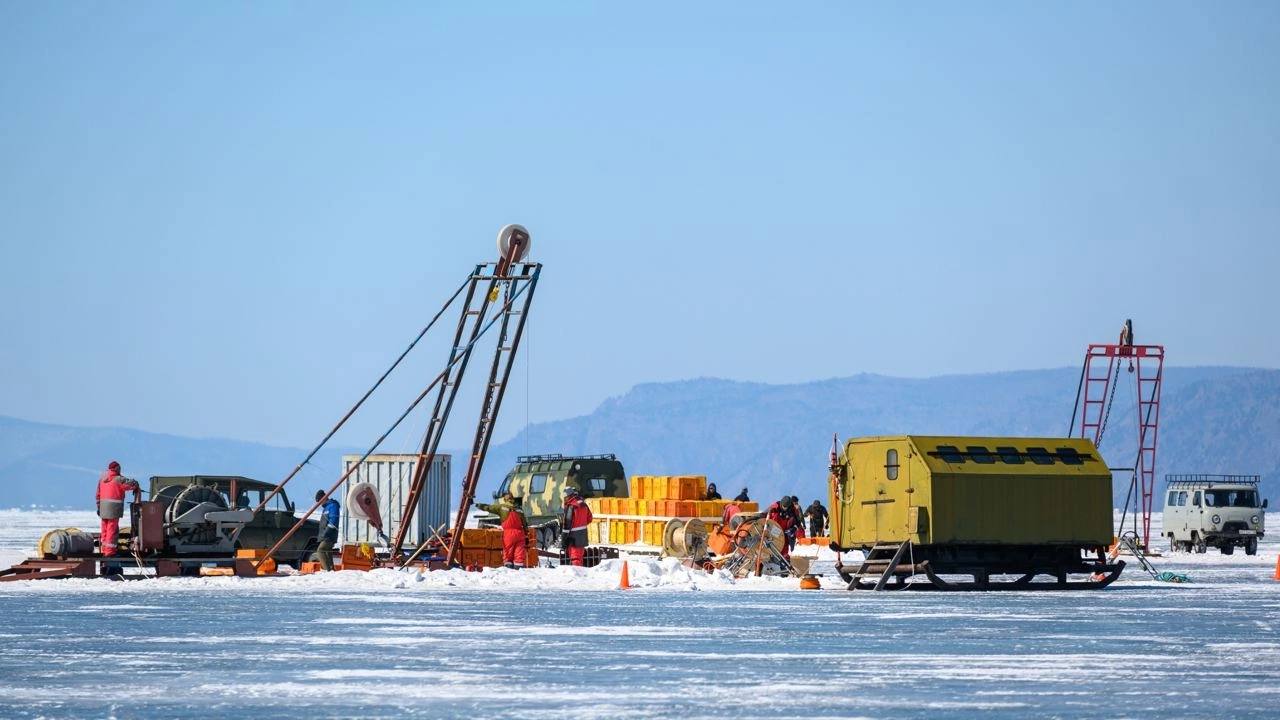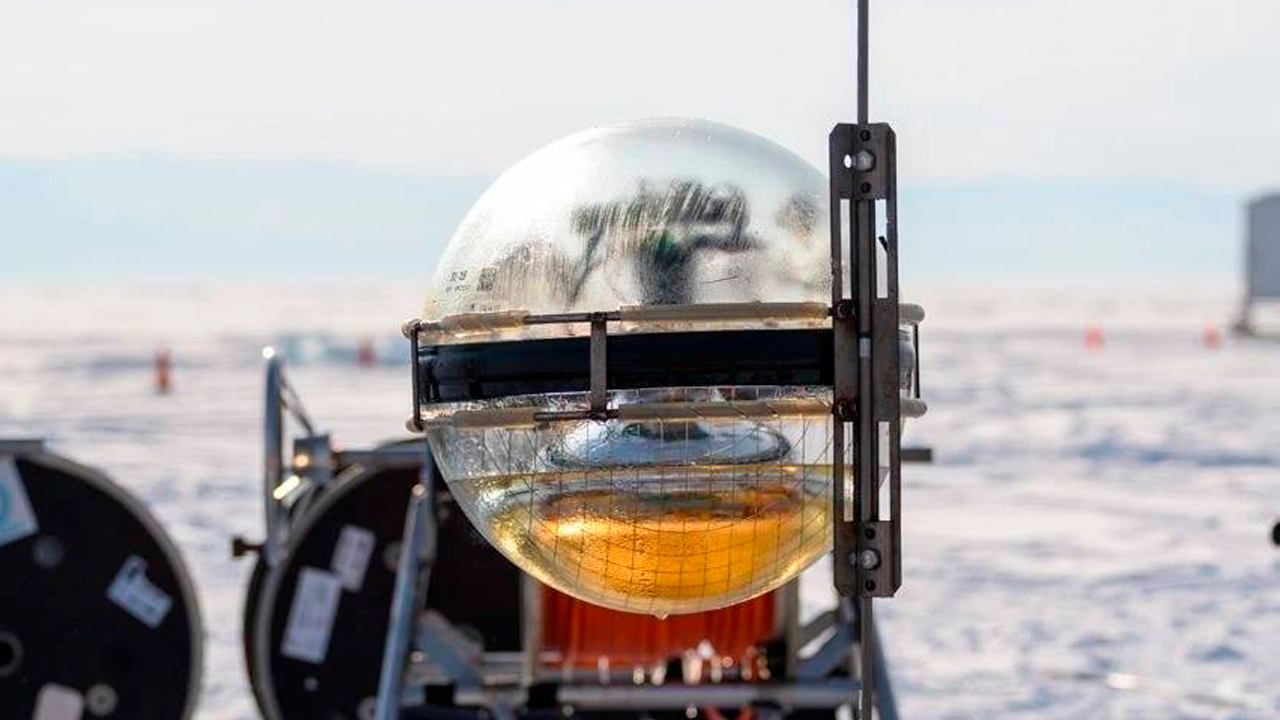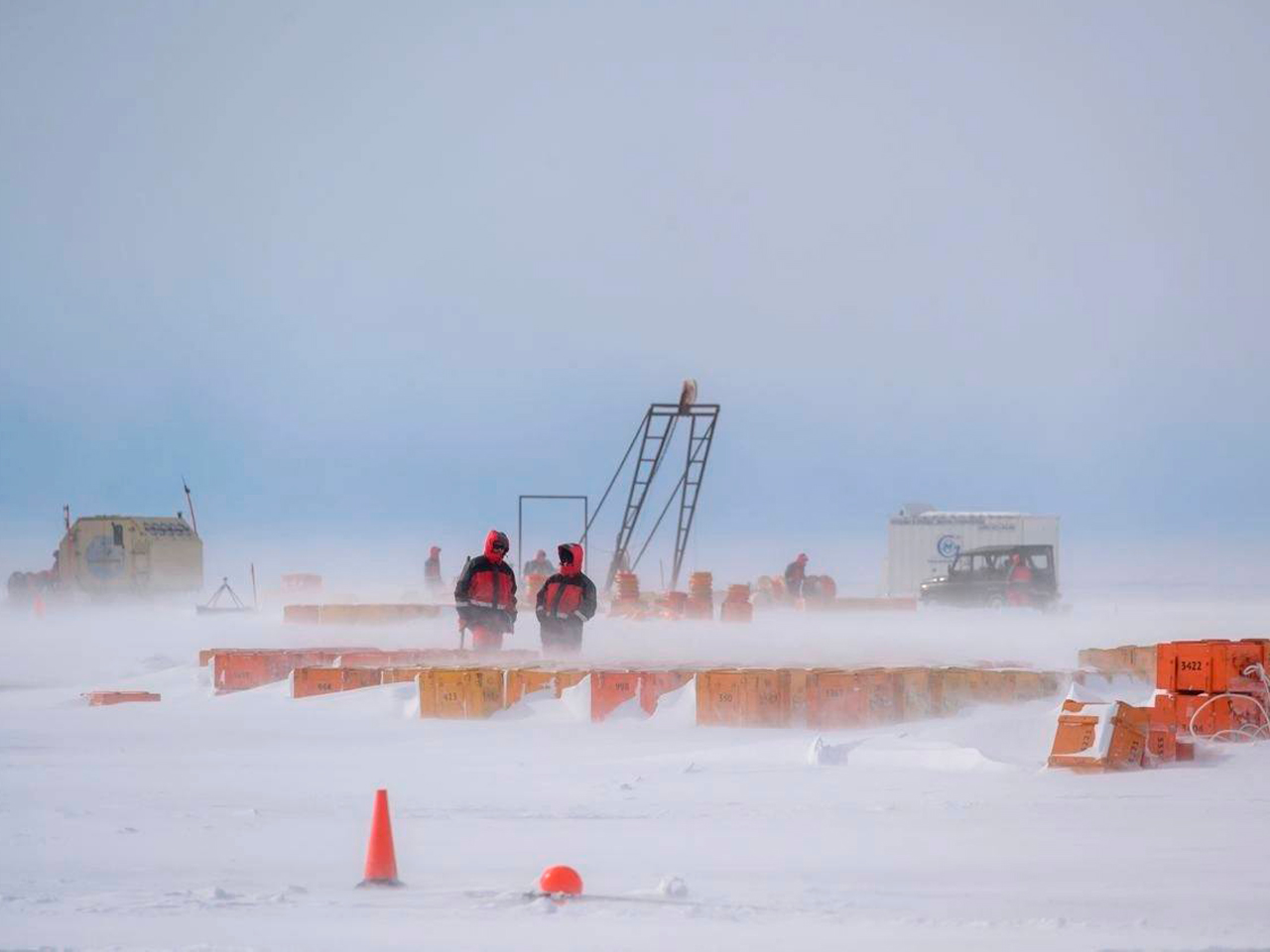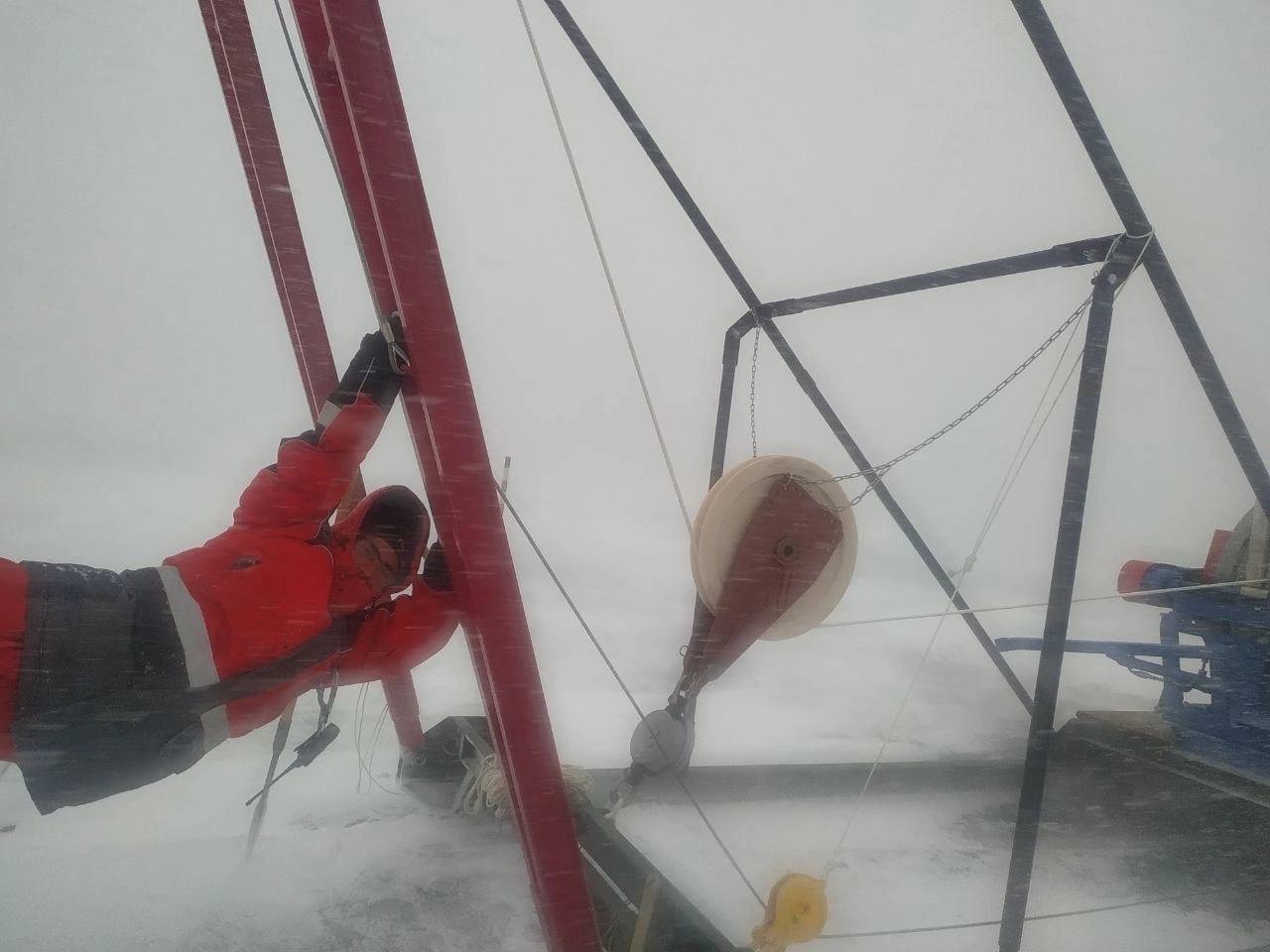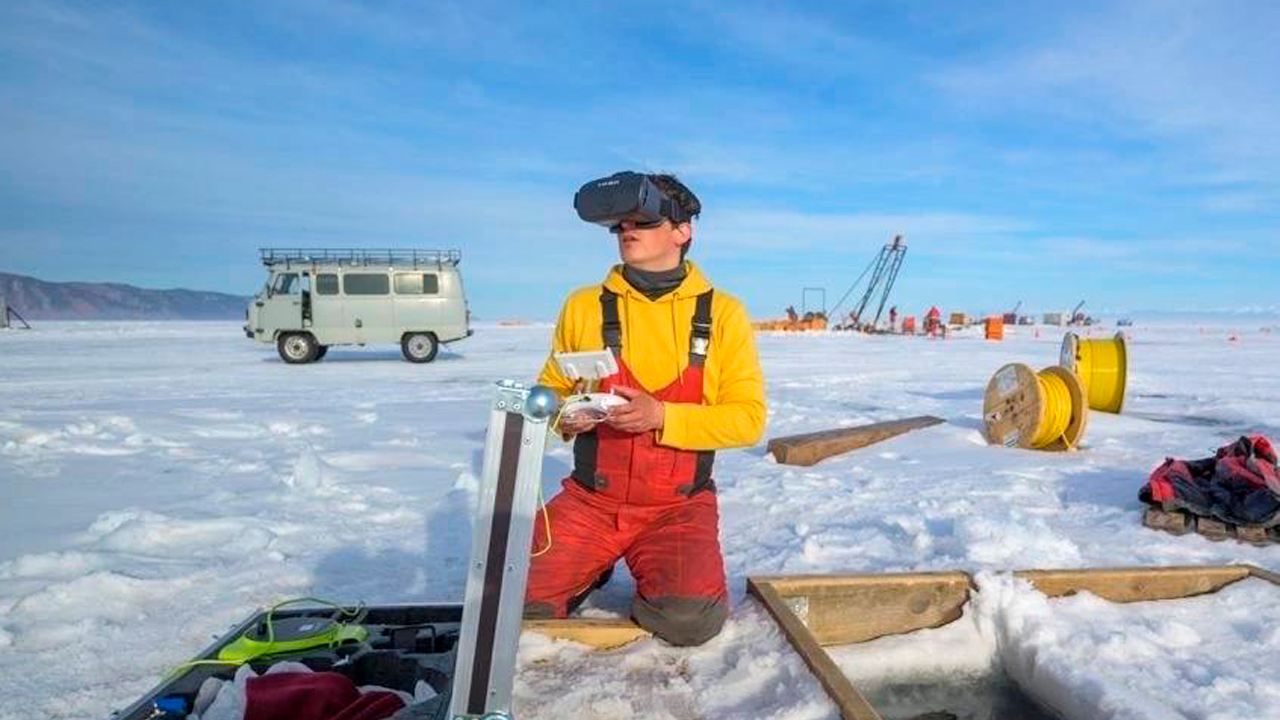Baikal Telescope exceeded volume of half cubic kilometre as result of 2023 expedition
News, 24 April 2023
During the 2023 winter expedition, specialists of the Baikal-GVD collaboration installed two new clusters of the telescope, repaired and modernised already placed detector elements, and continued developing a system for transferring data via optical cables inside the facility.
The Baikal-GVD Neutrino Telescope is aimed at detection and study of ultrahigh-energy neutrino fluxes from astrophysical sources. Using it, scientists are going to study not only processes with huge energy release that happened in the distant past, but also galaxy evolution, formation of supermassive black holes, and particle acceleration mechanisms.
The Baikal Neutrino Telescope is a neutrino detector located in Lake Baikal 3.6 km offshore at a depth of about 1300 m. This unique scientific facility is a significant tool of multimessenger astronomy, a new powerful method for studying the Universe. Baikal-GVD is one of the three operating neutrino telescopes across the world and, along with IceCube at the South Pole and KM3NeT in the Mediterranean Sea, is part of the Global Neutrino Network (GNN).
The Baikal-GVD Telescope is the largest in the Northern Hemisphere and the second in size in the world. To date, 12 clusters have been put into operation. They are spaced 250―300 m away from each other. Since 8 April 2023, they have been taking data. One cluster is a detector per se containing 8 vertical strings with optical modules (36 spheres on a string). At present, the telescope comprises 3500 such photodetectors. The project volume of one cubic km is intended to be achieved by 2027.
“The season 2023 is turned out to be a trial of strength of the expedition team. The weather also tried to make it harder, but we should admit, it provided us with solid ice until the end of the ice work. However, despite the difficulties, specialists introduced planned system changes both in the preparation of equipment and in the technological plan for the deployment of the facility. I would like to note the increased professional level of the team that had to undergo reorganization but nevertheless almost completely coped with the planned tasks,” Head of the expedition, Head of the facility of the Dzhelepov Laboratory of Nuclear Problems JINR Igor Anatolievich Belolaptikov highlights.
“During this expedition, experts successfully made a planned step towards the increase in the effective volume of the detector. Before the completion of the initial development project of the high-energy neutrino detector of a cubic-kilometre volume, experts need to make two or three more such steps. We are beginning to outline a plan of further development of the detector based on the fibre optic data acquisition system,” – Head of the collaboration, a Corresponding Member of RAS, Head of the Laboratory of High-Energy Neutrino Astrophysics of the Institute for Nuclear Research of RAS (INR RAS) Grigory V. Domogatsky says.
The Baikal-GVD Neutrino Telescope is being constructed by concerted efforts of the international collaboration with the leading role of the Institute for Nuclear Research of the Russian Academy of Sciences (INR RAS, Moscow), the founder of this experiment and the direction “high-energy neutrino astronomy” in the world, and of the Joint Institute for Nuclear Research (JINR, Dubna). More than 70 scientists and engineers from 9 science centres of Russia, the Czech Republic, Slovakia, and Kazakhstan are involved in the project.
INR RAS (Moscow) and JINR (Dubna) organized the 2023 expedition.
